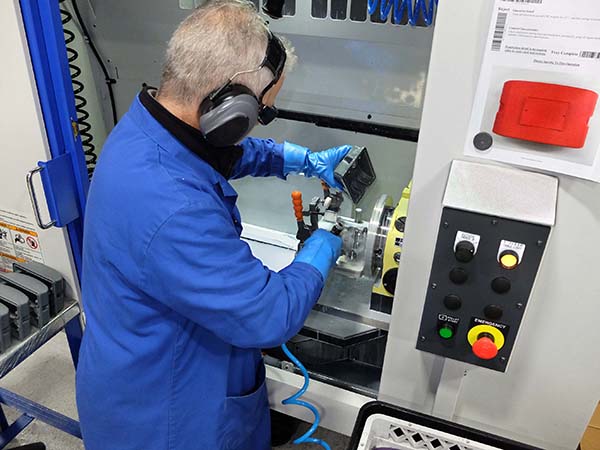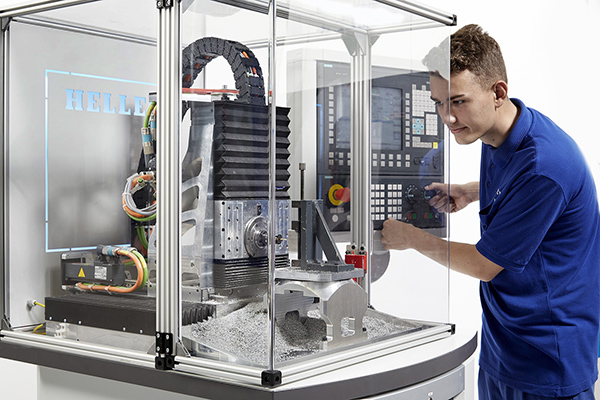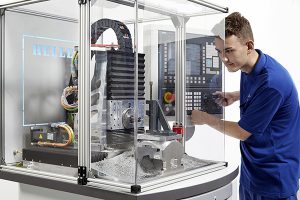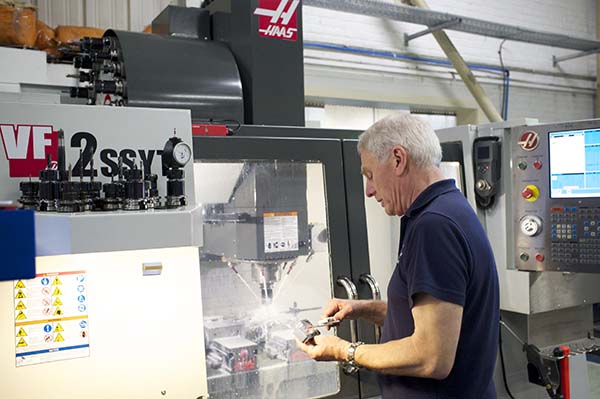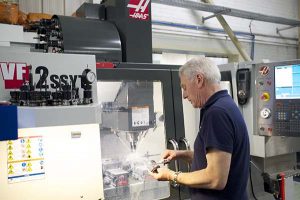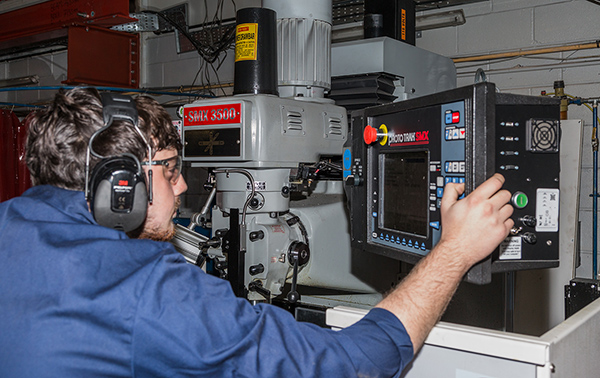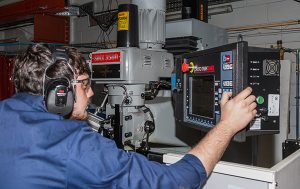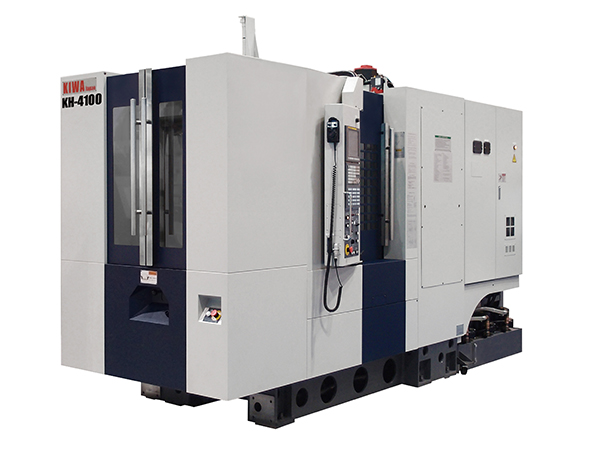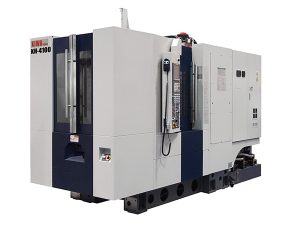Zinc and aluminium high-pressure die-casting specialist, RD Castings, has used Japanese-built, high-speed, twin-pallet machining centres from Brother since 1989, and currently has nine of them adding value to its products in two machine shops in Mildenhall. Since the mid-90s, the 30-taper machines have replaced manual milling, drilling and tapping, which was both labour intensive and subject to quality variation.
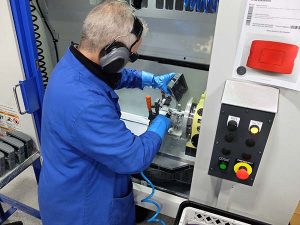
Running the company are siblings Anthony and Michael Pateman, who were interested when Brother’s UK agent, Whitehouse Machine Tools, suggested they see a demonstration of the new ISO control with 12” colour LCD screen, the CNC-C00, a significantly faster and more user-friendly CNC system fitted to its latest machines.
After they visited the agent’s Kenilworth showroom and technical centre, they came away not only with up-to-date information on the new control’s capabilities, but also having ordered another Brother machining centre, a Speedio R650X1 with Nikken rotary 4th axis. It was not their intention before the visit, but the machine was so productive and such a good fit for RD Castings’ needs that they placed the order on the day and invested in a second identical model within six months.
Numerous facets make the machine particularly applicable to machining light castings, one being its outstanding speed. Workpiece changeover is completed entirely within the 3.4-second rotation of the twin-pallet ‘Quick Table’, while the 21-pocket magazine’s 0.9 second tool-change time, 50 m/min rapids in X Y and Z, and rotation of the 4th CNC axis, are carried out simultaneously.
The first tool is ready to cut the next component immediately it arrives in the machining area, and little time is wasted on each subsequent exchange of the cutter due to the rapid tool-to-tool time and spindle acceleration from zero to 16,000 rpm in 150 ms, with similarly fast stop time.
“The speed of tool change on the R650X1 mirrors that of our Brother 324N and R2A models, where the tool carousel encircles and travels with the spindle, which does not have to move away to pick up a new cutter as on the Brother TC32A and 32B machining centres that we also have on-site,” explains Michael Pateman. “It results in very high productivity that is enhanced by faster processing of existing programs in the new CNC-C00 control. For example, we recently reduced a 3.5-minute cycle by 20 seconds with no change to the original program. If we are machining say 20,000-off parts annually, the saving runs into thousands of pounds.”
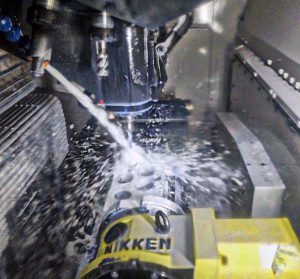
Anthony Pateman pointed out another advantage of the R650X1; the generous axis travels of 650 x 400 x 305 mm in X, Y and Z. The table accepts RD Castings’ 500 x 350 mm base plates on the trunnion fitted to both machines, allowing multiple components to be fixtured for two- and three-axis machining, relieving the load on the 324Ns and R2As, which are always filled with work.
He adds: “There is a trend towards larger castings these days and we have just installed a 500-tonne casting machine to meet the requirement. In order to perform machining, the ability of the R650X1 to swing our 400 mm diameter parts in the rotary axis means that we are often able to finish these bigger castings in one hit and save on a second set-up operation, which hugely decreases the cost of production.”
To underline this comment, he points to a casting of about the size that used to need a second operation but is now machined in one four-axis process, saving 70p per part.
Simon Hale, CNC machine shop manager, stated that the productivity of another part – an aluminium die cast housing for the rail industry – has been nearly doubled using the larger machine compared with the other Brother models featuring similar tool carousels. Some 17 castings per hour were drilled and tapped using 12 tools on the latter machines, whereas with a trunnion fixture on an R650X1, 32 parts per hour come off the machine after each pallet rotation. Furthermore, just eight tools are needed.
The increase in output is partly because, by routing coolant at the uprated 30-bar pressure on RD Castings’ latest machines through an indexable-insert drill rather than employing a twist drill, it is possible to produce larger holes above 18 mm diameter in one spindle movement, rather than having to spot and then peck drill the holes multiple times.
Michael Pateman asserts that manufacturing costs are increasing in Asia while the lower pre-Brexit value of the pound is helping UK competitiveness.
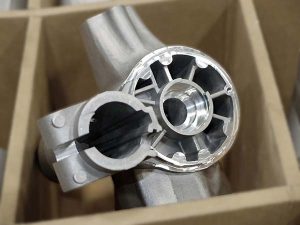
He sums up: “By employing ultra-high speed machining techniques on 30-taper rather than 40-taper machines, with extensive use of PCD inserts clamped in dynamically balanced tool holders, the cost of producing a casting is now about the same in Mildenhall as it is in China – and we are winning back business as a result.
“The latest Brother Speedios with their larger working envelope have added considerable versatility to our shop floor, as they can economically machine anything from the simplest, smallest casting up to the largest and most complex. Productivity is also up due to the faster control and by allowing more flexible production planning.
“All of our Brother machines work flat out eight hours a day and their speed, accuracy and reliability are fantastic. Coupled with the high level of support from Whitehouse, it has been an unbeatable package for us.”
For further information www.wmtcnc.com




